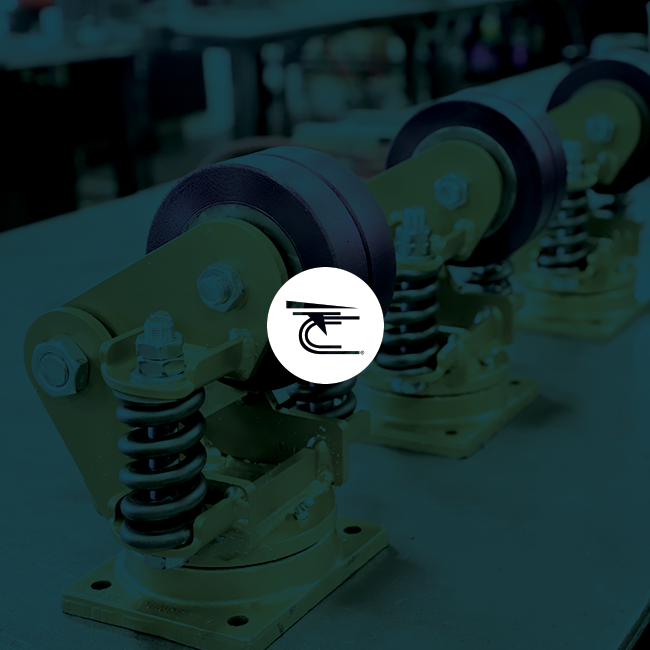

Brakes are an important component of heavy-duty caster wheels. They can help prevent carts or racks from moving unexpectedly, preventing damage to the product and injury to employees. There are several different caster brake types, and each one has its own set of benefits. Understanding more about them will help you make better choices for your facility.
| TheCam Brake is used on lighter duty casters. This brake provides an efficient, cost-effective hub braking system. |
| Single-Side Brakes work well for casters on the lighter end of the heavy-duty spectrum. It is suitable for wheels ranging from six to 12 inches in diameter, and as its name suggests, it brakes only one side of the caster. When applied to all casters attached to a cart or rack, it is exceptional at keeping a load stationary. |
| Face Contact Brakes can offer substantial braking power, but they are not ideal for every wheel type. These brakes activate via a brake shoe that must be tightened against the wheel itself. This can prevent motion for heavier tread wheels, but it is not the best solution for certain shock-absorbing wheels. It’s also not ideal for wheels made from softer, more flexible materials. |
| Poly Lock Brakes utilize a polyurethane lock roller that engages with a steel brake shoe against the wheel’s tread. These are foot-activated brakes that work well for heavy-duty loads. They can be installed in two different ways – toe out and toe in – to best suit your unique application. The levers are easy to engage either way and provide excellent, reliable stopping power. |
| Pneumatic Poly Cam (PP) Brakes are much like traditional poly lock brakes, but the brake shoe offers more (and more fluid) movement to compensate for the thicker pneumatic tires. Like the standard poly lock brake, this one is also foot-operated and is relatively easy to engage and release. This works very well for heavy loads that require plenty of shock absorption but still rely on good brakes to keep loads stationary. |
| Wrap Around (W) Brakes. If you rely on pivoting heavy-duty casters to move loads, then you might understand the difficulty involved in properly lining up your casters for access to the foot-activated brake. Wrap-around brakes solve this problem by giving operators access to the brake from all angles, no matter how the caster is oriented. This can save time and keep employees safer, all while reducing frustration. |
| Dual Side (DS) Brakes are an excellent and cost-effective option for heavy-duty industrial steel casters. These utilize levers on both sides of the brake to provide reliable and effective holding power. Both sides must be engaged by the operator to ensure proper operation, however. Like single-side brakes, these work best for loads on the lighter end of the heavy-duty spectrum. |
Brakes are an important component of heavy-duty caster wheels. They slow and stop carts to reduce operator strain, and they can help prevent carts or racks from moving unexpectedly, preventing both damage to the product and injury to employees. If you are still unsure of the best option, contact the experts at Caster Concepts today. With a bit of information about your application, you can easily discover the best casters and the best brakes for your individual projects and facility.